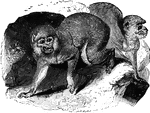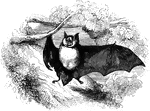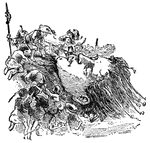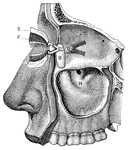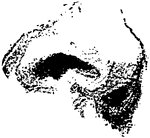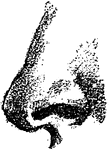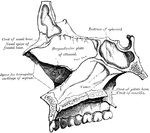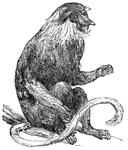
Proboscis Monkey
A native of Borneo. The proboscis monkey is so called because of its large nose. Males generally have…
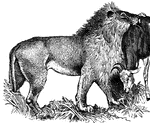
Lion
A lion when fully grown is nearly eleven feet long from nose to tip of tail and about four feet in height,…
Maid
Sing a Song of Sixpence; The maid was in the garden; Hanging out the clothes; Down came a blackbird;…
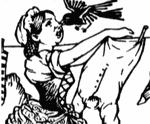
Maid
Sing a Song of Sixpence; The maid was in the garden; Hanging out the clothes; Down came a blackbird;…
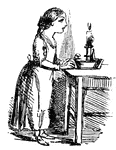
A Candle
Little Nancy Etticote, in a whice petticoat, with a red nose; the longer she stands, the shorter she…
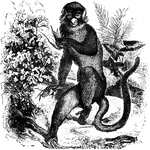
White-Nosed Monkey
C. nictitans. The nose of this monkey is not only white, but more prominent than in most monkeys.…
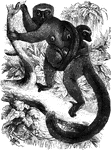
White-Fronted Lemurs
"Genus Maki: Lemur. The makis are the proper lemurs, and are distinguished by thick, soft fur,…
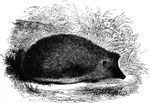
Hedgehog
"The body is short, thick, and stout; the nose pointed, the tail short or entirely wanting, and the…
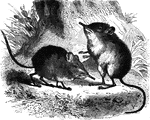
Elephant Mice
"They have long hindlegs, somewhat like gerboas, rather large ears, long tails, and a remarkable long,…

Rhynchocyon
"Of this genus Gervais makes a seperate family. The only species is the R. Cernei. This has…
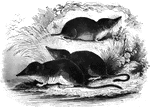
Shrews
"Is about the size of a rat.. Their legs are of equal length, and terminate into five toes, which are…

Raccoon
"The raccoon is about twenty-six inches long; the tail eight inches; the weight twenty to twenty-five…

Crab-Eating Raccoon
"The raccoon is about twenty-six inches long; the tail eight inches; the weight twenty to twenty-five…
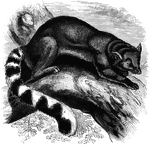
Ring-Tailed Bassaris
"It has a sharp, pointed nose, and a cunning expression, reminding one of a fox or raccoon. The body…
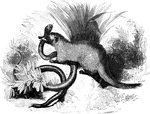
Eqyptian Ichneumon
Species of the genus Mangouste. This animal bears a close resemblance to the weasel tribe,…
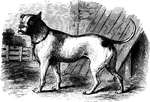
Bull Dog
"The bull dog has a round, thick head, a turned-up nose, and thick and pendulous lips. He is of moderate…

Peter White
Peter White will ne'er go right. Would you know the reason why? He follows his nose, wherever he goes,…
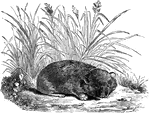
Calling Hare
"It has a head loner than usual with hares, and thickly covered with cur, even the tip of the nose;…
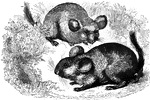
Chinchillas
"It is of a grayish color, and sufficiently long for spinning. The little animal which is produces it…

Six Banded Armadillo
"The central bands are usually six, but the number varies, Its size is nearly that of a woodchuck, being…
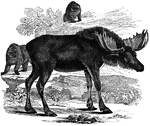
Moose
"This animal is the largest of the deer kind, being taller than thehorse. Its horns weigh fifty or sixty…

Roger's Rock
Roger's Rock. This sketch is from the lake, a little south of Cook's Point, seen just over the boat…
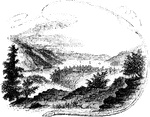
Fort Montgomery
"View near Fort Montgomery. This view is from an eminence near the mountain road, about three quarters…
Peekskill Landing
"View from Peekskill Landing. This view is from Peekskill landing, looking up the river. On the left…

Gar
"Two feet long, with the under jaw greatly protruded; it swims near the surface; bites at a hook; makes…

Hedgehog
"Hedgehog is a quadruped distinguished by having the body covered with spines instead of hair. The skin…
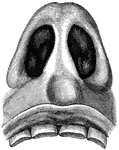
Nasal cavities
"Nasal Cavities, seen from Below. The sense of smell is located in the membrane which lines the cavities…
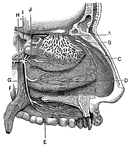
Nerves of the Nostril
"A, branches of the nerves of smell; B, nerves of touch to the nostrils; E, F,…

Respiratory Mechanism
"The respiratory mechanism consists of the lungs, a series of minute air chambers with a network of…
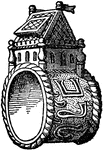
Ring
"A Ring is any circle or section of a cylinder. Rings of gold, silver, and of other metals and materials…

Ring
"A Ring is any circle or section of a cylinder. Rings of gold, silver, and of other metals and materials…
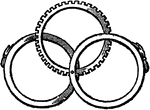
Ring
"A Ring is any circle or section of a cylinder. Rings of gold, silver, and of other metals and materials…

Hooded Seal
"The Seal, of the family Phocidæ, or seal tribe, are, of all four-limbed mammiferous animals,…

Ring the Bull
"This amusing game requires more care and delicacy of touch than at first seems to be the case. The…
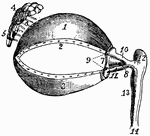
Eye Muscles
1, cartilage of the upper eyelid; 2, its lower border, showing the openings of the Meibomian glands;…
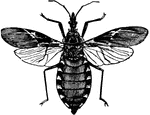
Blood Sucking Conenose
The body is somewhat flattened, and the sides of the abdomen are strongly recurved. The head long, narrow,…

Edward Lear's Rhymes
There was an old person of Dover, who rushed through a field of blue clover; But some very large bees…

Coyote
A type of wolf. About as large as a pointer dog with a full pelage, bushy tail, upright ears, and sharp…
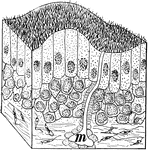
Section of Nasal Tissue
"A tiny block of tissue from the membrane lining the inner surface of the nose. Note the hundreds of…
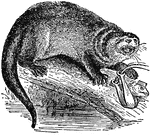
Otter
A class of carnivorous mammals of the weasel family, which includes about twenty species that vary greatly…
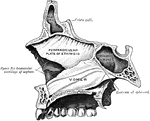
Vomer
The vomer is a single bone, situated vertically at the back part of the nasal fossae, forming part of…

Pit Viper
A venomous serpent. So called because of its characteristic pit between the eyes and the nose.
